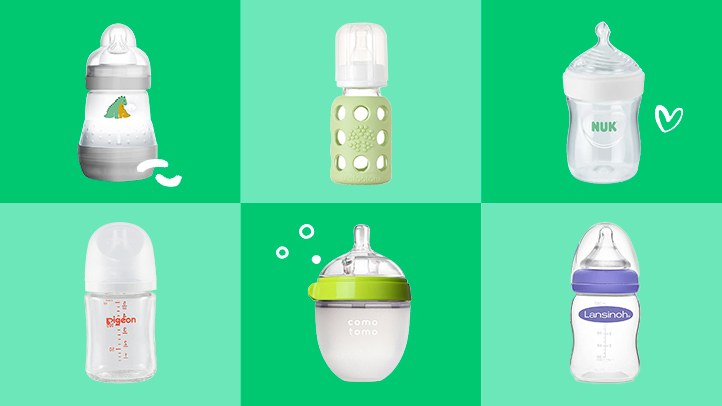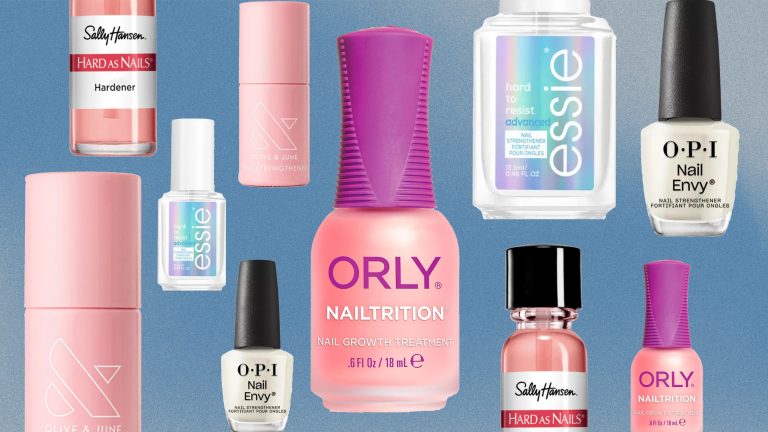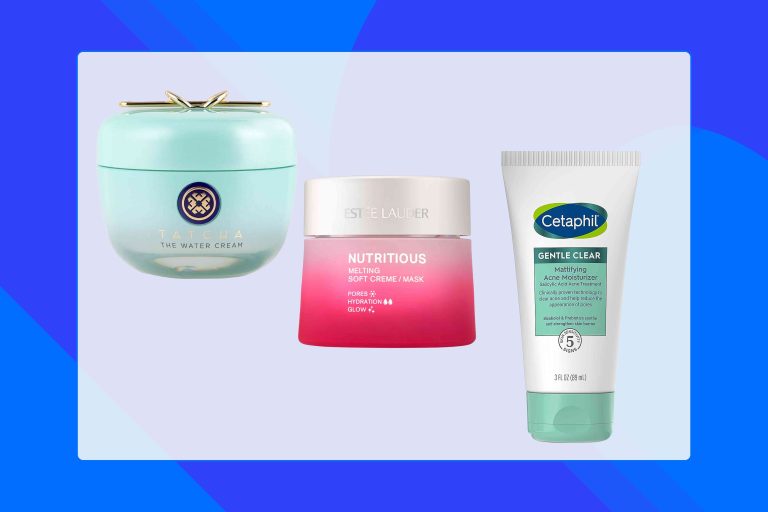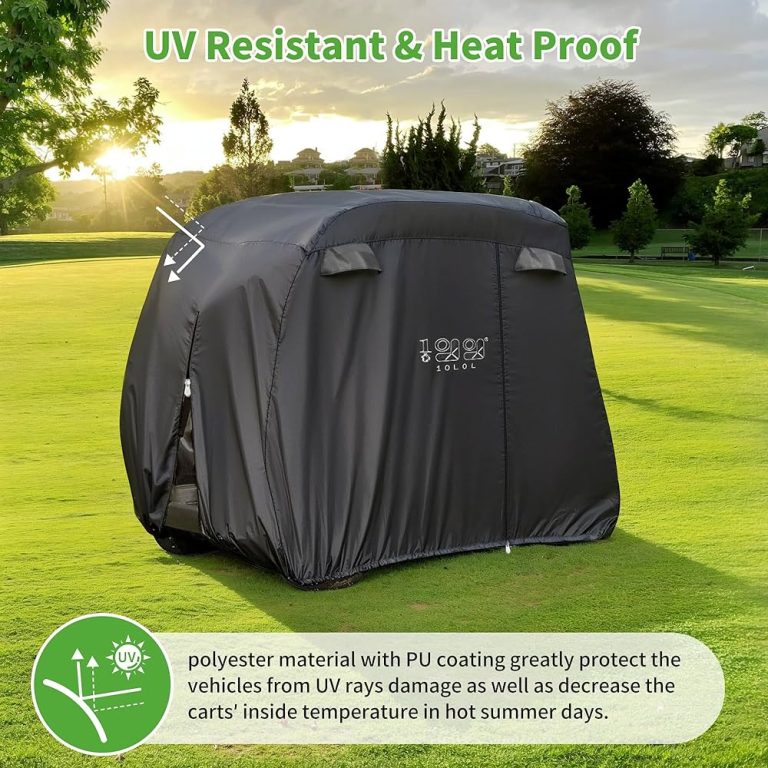Top 9 Best Bottle-Feeding Options for Your Baby in 2024
Choosing the right bottle for your baby can feel overwhelming with so many options available. Whether you’re a new parent or looking to switch up your current feeding routine, finding the perfect bottle that suits your baby’s needs is crucial. From reducing colic to ensuring an easy latch, the right bottle can make feeding time smoother and more enjoyable for both you and your little one.
In this article, we’ll explore the 9 best bottle-feeding options that cater to various needs and preferences. You’ll discover bottles designed to mimic breastfeeding, options that help with gas and reflux, and even those that grow with your baby. Let’s dive into the top choices that will make bottle-feeding a breeze.
Criteria for Selecting the Best Bottles
When choosing the best bottles for your baby, consider several essential factors to ensure a comfortable and safe feeding experience.
Material Considerations
Pay attention to the bottle’s material. Opt for BPA-free plastic, glass, or stainless steel to avoid harmful chemicals. Glass bottles are durable and easy to clean, while plastic ones are lightweight and less prone to breakage. Stainless steel offers excellent durability and temperature retention but can be more expensive.
Nipple Shape and Flow Rate
Focus on the nipple’s shape and flow rate. If your baby is transitioning from breastfeeding, a nipple that mimics the breast’s shape will help. Flow rates vary by age and developmental stage; newborns need slower flow rates to prevent choking, while older babies can handle faster ones. Always check the packaging for flow rate recommendations.
Ease of Cleaning and Maintenance
Consider how easy it is to clean and maintain the bottle. Bottles with fewer parts are quicker to assemble and clean, which is a lifesaver during late-night feedings. Wide-neck bottles make it easier to reach all areas for thorough cleaning, reducing the risk of bacteria buildup. Dishwasher-safe options save time and ensure a meticulous clean.
Top 9 Best Bottle-Feeding Options
Choosing the right bottle can enhance both your baby’s and your feeding experience. Here are the top 9 best bottle-feeding options for your little one:
1. Glass Baby Bottles
Glass baby bottles are a fantastic option if you prefer a durable and chemical-free choice. They don’t leach harmful substances and can be easily sterilized. For example, brands like Dr. Brown’s and Evenflo offer heat-resistant glass bottles that withstand repeated sterilization without degradation. Glass bottles often come with silicone sleeves to prevent breakage and provide a better grip. Though heavier than plastic, the benefits of using glass bottles for their purity and durability make them a popular choice among many parents.
2. Anti-Colic Bottles
When your baby struggles with colic, finding the right bottle can make a huge difference. Anti-colic bottles are designed to reduce gas, spit-up, and discomfort during feeding.
Advantages of Anti-Colic Bottles
Anti-colic bottles feature venting systems that alleviate air intake, reducing the likelihood of gas and burping. Brands like Philips Avent and Tommee Tippee offer advanced anti-colic technologies that ensure milk flows smoothly through the nipple. With valves that separate air from milk, babies experience less discomfort. Additionally, these bottles often come with easy-to-clean parts, making maintenance simpler for busy parents.
Drawbacks of Anti-Colic Bottles
Despite their benefits, anti-colic bottles can come with more parts, making assembly and cleaning more time-consuming. Some parents may find that certain models have a steeper learning curve, especially when first adjusting to the venting systems. Moreover, these bottles can be slightly more expensive than standard ones, possibly impacting your budget if you need several.
3. Stainless Steel Baby Bottles
Stainless steel baby bottles are a rising trend among health-conscious parents. Let’s dive into their benefits and limitations to see if they’re the right choice for you.
Benefits of Stainless Steel
- Durability: Stainless steel bottles are incredibly durable and can withstand drops and rough handling without breaking, unlike glass or plastic alternatives.
- Safety: These bottles are free from harmful chemicals like BPA, phthalates, and lead, making them a much safer option for your baby’s health.
- Insulation: Many stainless steel bottles offer excellent insulation, keeping milk warm or cold for extended periods, which is perfect for on-the-go feeding.
- Ease of Cleaning: Stainless steel surfaces resist bacteria growth and are easy to clean, often supporting high-temperature sterilization methods like boiling.
- Eco-Friendly: Being long-lasting and recyclable, stainless steel bottles are an environmentally friendly choice, reducing plastic waste.
- Weight: Stainless steel bottles can be heavier than plastic or glass ones, which might make them harder for your baby to hold.
- Cost: These bottles often come with a higher price tag compared to plastic options, which might not fit into all budgets.
- Limited Transparency: Unlike glass or plastic, you can’t see through stainless steel bottles, making it harder to gauge the remaining milk level.
- Metallic Taste: Some parents report that stainless steel bottles can impart a slight metallic taste to the milk, which may not appeal to all babies.
Consider these factors when deciding if stainless steel baby bottles are the best fit for your feeding routine.
4. Plastic Baby Bottles
Plastic baby bottles are a popular choice among parents due to their lightweight and shatterproof nature. Below, you’ll find the pros and cons to help you decide if plastic bottles are right for your baby.
Pros of Plastic Bottles
- Lightweight: Plastic bottles are much lighter than glass or stainless steel, making them easier for both you and your baby to handle.
- Durable: These bottles are shatterproof, so you don’t need to worry about them breaking if dropped.
- Affordable: Generally, plastic bottles are more budget-friendly compared to other options like glass and stainless steel.
- Variety: Available in a wide range of shapes, sizes, and designs to suit your needs and preferences.
- Convenience: Many plastic bottles are compatible with various accessories and can be easily found in stores.
- Chemical Concerns: Some plastic bottles contain BPA or other chemicals that can leach into the milk, potentially harming your baby, though BPA-free options are available.
- Durability: Over time, plastic can get scratched and clouded, making them harder to clean and less sanitary.
- Heat Sensitivity: Plastic bottles can warp if exposed to high temperatures, which might be a concern for sterilization processes.
- Environmental Impact: Plastic is less eco-friendly compared to glass or stainless steel, as it contributes to landfill waste when disposed of.
5. Disposable Liner Bottles
Disposable liner bottles are a convenient option for busy parents. They use pre-sterilized liners that simplify the feeding process.
Advantages of Disposable Liner Bottles
- Convenience
Disposable liner bottles save time since you don’t need to sterilize them after each use. The pre-sterilized liners are ready to go, making them perfect for travel or late-night feedings. - Reduced Air Intake
These bottles often include collapsible liners that reduce the amount of air your baby swallows, minimizing gas and discomfort. - Easy Cleanup
Once the feeding is done, simply throw away the liner. This reduces the amount of time you spend washing bottles and nipples. - Hygiene
Since the liners are single-use, there’s less chance of bacteria buildup. This makes disposable liner bottles a hygienic choice for your baby. - Flexibility
You can find various liner sizes to fit your baby’s growing needs. This adaptability makes it easier to transition as your baby grows.
- Cost
Consuming disposable liners can add up over time. While the bottles themselves may be affordable, the recurring cost of purchasing liners can be expensive. - Waste
Using disposable items contributes to more waste. If environmental impact matters to you, this could be a significant downside. - Availability
Not all stores carry the specific liners you need. This may require you to shop online or visit multiple stores, adding inconvenience. - Potential for Spills
If the liner isn’t properly placed or leaks, you risk spills. Ensuring correct placement every time can be a hassle. - Less Durable
Disposable liner bottles tend to be less rugged than glass or stainless steel options. Over time, the bottle itself may show signs of wear and tear.
6. Wide-Neck Baby Bottles
Wide-neck baby bottles have become increasingly popular among parents for their unique features and benefits.
Benefits of Wide-Neck Bottles
- Easier Cleaning: The larger opening of wide-neck bottles makes cleaning much simpler. You can easily access all areas inside the bottle without special brushes.
- Simplified Formula Mixing: Pouring formula into a wide-neck bottle is less messy and more convenient. The wider opening reduces the chances of spills and makes it easier to get the correct measurements.
- Compatibility with Natural Latch: Many wide-neck bottles are designed to mimic a mother’s breast, which can help babies switch between breastfeeding and bottle-feeding more easily. This is especially useful for babies who struggle to adapt to bottle-feeding.
- Greater Stability: Because of their base design, wide-neck bottles are often more stable and less likely to tip over, reducing the risk of spills and waste.
- Bulkier Design: Wide-neck bottles are generally larger and more cumbersome to hold. This can be challenging for both you and your baby, especially during long feeding sessions.
- Increased Storage Space: The bulkier design requires more storage space in your kitchen or diaper bag, which can be inconvenient if space is limited.
- Higher Cost: Wide-neck bottles can be more expensive compared to standard bottles. The design and materials used often contribute to the higher price point.
- Limited Compatibility with Some Accessories: Some bottle accessories, like warmers and sterilizers, may not be compatible with the wider design, limiting your options.
Consider these factors when deciding if wide-neck bottles are suitable for your baby’s needs.
7. Angled Baby Bottles
Angled baby bottles are designed to minimize air ingestion during feeding, helping to keep your baby comfortable and reduce the risk of colic.
Pros of Angled Bottles
- Reduced Air Intake
Angled bottles reduce air bubbles in the milk, which minimizes air ingestion and helps prevent gas and colic in your baby. - Improved Feeding Position
The unique shape promotes a semi-upright feeding position, reducing ear infections and allowing better digestion. - Ease of Handling
The angled design provides a comfortable grip for both baby and parent, making feeding time more enjoyable and less strenuous. - Compatibility with Venting Systems
Many angled bottles are compatible with advanced venting systems, offering an extra layer of air reduction for a smoother feeding experience.
- More Difficult to Clean
The angled design can make it challenging to reach every corner during cleaning, requiring special brushes or additional effort. - Limited Compatibility with Warmers
Angled bottles may not fit well in some bottle warmers and sterilizers, making the heating process cumbersome. - Higher Cost
These specialized bottles often come at a higher price point compared to standard baby bottles. - Potential for Leaks
The unconventional shape sometimes leads to imperfect sealing, increasing the risk of leaks during use.
8. Natural-Feel Baby Bottles
Natural-feel baby bottles aim to mimic the breastfeeding experience, making the transition easier for your baby. These bottles are designed with soft, flexible nipples that closely resemble the feel and movement of a mother’s breast.
Advantages of Natural-Feel Bottles
Enhanced Comfort: The soft, flexible nipple design provides a more natural feeding experience, which can help reduce nipple confusion for babies switching between breast and bottle feeding.
Better Latch: These bottles often feature wide-neck nipples that promote a deeper, more comfortable latch, similar to breastfeeding.
Less Fussiness: Babies adapt more readily to natural-feel bottles, which can lead to reduced feeding-related fussiness and discomfort.
Easy Transition: For mothers who breastfeed and bottle-feed, these bottles make the switch smoother and maintain your baby’s familiarity with breastfeeding motions.
Drawbacks of Natural-Feel Bottles
Higher Cost: Natural-feel bottles can be more expensive than standard bottles due to their specialized design and materials.
Cleaning Challenges: The intricate nipple design may require more meticulous cleaning to ensure all parts are thoroughly sanitized.
Limited Availability: Not all retailers carry a wide selection of natural-feel bottles, which might limit your options.
Potential Leaks: The softer nipple material and design can sometimes lead to increased risks of leaks, particularly if not assembled correctly.
By considering these factors, you can decide if natural-feel baby bottles are the right fit for your baby’s feeding needs.
9. Smart Baby Bottles
Smart baby bottles take feeding convenience to the next level with integrated technology. These innovative bottles offer several advantages but also come with a few limitations.
Benefits of Smart Bottles
Track Feeding: Smart bottles can record the amount of milk your baby consumes, helping you monitor their intake more accurately.
Temperature Control: Many smart bottles feature built-in temperature sensors to ensure the milk is at a safe and ideal temperature for your baby.
Instant Feedback: You can get real-time updates on feeding patterns and habits via connected apps, allowing for better-informed feeding decisions.
Leak Alerts: Some smart bottles come with leak detection to prevent messy spills and wasted milk.
Growth Monitoring: Advanced models can track your baby’s growth metrics and provide insights into their developmental milestones.
Limitations of Smart Bottles
Higher Cost: Smart bottles tend to be more expensive than traditional bottles, making them a bigger investment.
Battery Dependency: These bottles often rely on batteries or charging, adding another maintenance task for busy parents.
Complexity: The added technology can make smart bottles more complicated to clean and assemble.
Compatibility Issues: Not all smart bottle models are compatible with every app or device, potentially limiting their functionality.
Potential Over-reliance: There’s a risk of parents becoming overly dependent on the technology, which could detract from intuitive feeding practices.
With these factors in mind, smart baby bottles can offer numerous benefits for monitoring and enhancing feeding times, but it’s essential to weigh their limitations to determine if they’re the right choice for you and your baby.
Factors to Consider When Bottle-Feeding
When bottle-feeding, there are several important aspects to ensure your baby’s health and comfort. Here’s what you need to keep in mind:
Choosing the Right Formula
Select a formula that suits your baby’s nutritional needs. Consult with your pediatrician to decide between cow’s milk formula, soy-based formula, or specialized types such as hypoallergenic or lactose-free options. Remember, each baby reacts differently, so you may need to try a few to find the best fit.
Setting a Feeding Schedule
Establish a feeding routine to help your baby adjust. Newborns typically need to eat every 2-3 hours, around 8-12 times per day. As they grow, you can gradually increase the intervals between feedings. Watch for hunger cues like sucking on hands to ensure your baby is fed when they need it.
Proper Bottle Hygiene
Maintain excellent hygiene to prevent infections. Always wash bottles, nipples, and caps thoroughly with hot, soapy water, or use a dishwasher if they’re dishwasher-safe. Sterilize bottles regularly, especially for newborns, to provide the cleanest feeding environment.
Common Challenges in Bottle-Feoding
Bottle-feeding can come with its own set of challenges. Understanding these issues and how to tackle them can make the process smoother for you and your baby.
Dealing with Reflux and Gas
Reflux and gas are common issues babies face when bottle-feeding. Ensuring the baby is in an upright position during feeding can help reduce these problems. Using bottles designed to minimize air intake can also alleviate gas. Additionally, consider burping your baby halfway through the feed to release trapped air. Switching formulas, under pediatric guidance, can also sometimes reduce reflux and gas.
Finding the Right Bottle for Your Baby
Finding the right bottle for your baby is crucial but can be challenging. Babies have unique preferences for nipple shapes and flow rates. Experimenting with different bottles may be necessary to find one that suits your baby’s feeding style. Pay attention to how your baby latches onto the nipple and if they seem comfortable. Opting for bottles with anti-colic features can help reduce feeding discomfort. Consulting with other parents or your pediatrician can provide valuable insights into what might work best.
Conclusion
Navigating the world of bottle-feeding can be overwhelming, but with the right information, you can make confident choices for your baby. Whether you opt for natural-feel bottles or high-tech smart bottles, understanding the pros and cons is crucial. Keep in mind the importance of choosing the right formula, maintaining a feeding schedule, and ensuring bottle hygiene.
Don’t hesitate to experiment with different bottles to find the perfect match for your baby. Consulting with pediatricians and other parents can provide valuable insights. By paying attention to your baby’s needs and preferences, you’ll create a comfortable and healthy bottle-feeding experience.
Frequently Asked Questions
What are the key benefits of smart baby bottles?
Smart baby bottles offer features like tracking feeding times and amounts, monitoring temperature, and providing alerts. These capabilities help parents keep better track of their baby’s feeding patterns, ensuring optimal nutrition and safety.
Are smart baby bottles cost-effective?
Smart baby bottles tend to be more expensive than traditional ones. The higher cost is due to integrated technology that requires batteries and sometimes apps, which may add to the overall expense.
How do I choose the right formula for my baby?
Selecting the right formula depends on your baby’s nutritional needs, any food allergies, and pediatrician recommendations. It’s important to consult with a healthcare professional when making this decision.
What is the best way to maintain bottle hygiene?
Proper bottle hygiene is crucial. Always sterilize new bottles, clean them thoroughly after each use, and ensure all parts are completely dry before storing. Follow manufacturer instructions for cleaning and sterilizing.
How can I address common bottle-feeding challenges like reflux and gas?
To minimize reflux and gas, adjust the baby’s feeding position to keep their head elevated, choose bottles designed to reduce air intake, and ensure proper burping techniques during and after feeding.
What factors should I consider when selecting a baby bottle?
Consider nipple shape, flow rate, bottle material, and your baby’s preferences. Experimenting with different options and seeking advice from pediatricians can help determine the best bottle for your baby.
How important is setting a feeding schedule for my baby?
A consistent feeding schedule helps regulate your baby’s hunger cues and provides a sense of security. It also allows parents to monitor intake and ensure the baby is getting enough nutrition at regular intervals.
Can I mix and match different bottle brands and nipple types?
Yes, it’s often beneficial to try various bottles and nipples to find what suits your baby best. Ensure compatibility and monitor for any issues that may arise from mixing brands.
What should I do if my baby rejects the bottle?
If your baby rejects the bottle, try different nipple shapes or flow rates, warm the bottle, or have someone else offer the bottle. Persistence is key, and consultation with a pediatrician can provide additional strategies.
Is it necessary to use a different bottle for different stages of development?
As babies grow, their needs change. Bottles with adjustable flow rates or stage-specific nipples can accommodate these changes, making feeding more efficient and comfortable for your baby.




